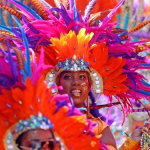The second in the trifecta of the MFL Wine Society this year showcased the delight of red wines, specifically from Argentina, Italy, Austria, and France.
The dress code was smart, with a ‘casual nod’ to one of the countries whose wines were tasted. There was an array of both enthusiastic and rather standard outfits, but the colour added flavour to the room.

So, nestled into the Kilbracken dining room, the LXX and XX linguists had their glasses filled (sparingly, of course) with the first wine: Stift Klosterneuburg St Laurent 2019, which cost £8.50. An introduction about Austrian wines was given and explained that Austria has a long history of making fine wines, but with the country’s wines undergoing a renaissance in recent years, now is arguably the best time to get to know the diverse and delicious bottles on offer. The students were at first rather taken aback by the overpowering aroma but were swiftly satisfied by the comforting winter feeling. Some claimed that they could ‘taste cherries.’ It was wonderfully smooth and fruity with not the slightest hint of harsh tannins.
The second, was much adored: The Society’s Argentine Malbec 2020, £7.95. One of the pourers, Mrs O’Mahoney, would describe the wines in French and Spanish to the students to ensure that the classroom standard was upheld. The first note for this wine was that it would ‘ideal with a barbecued steak.’ Historically, Argentina has had a healthy domestic market, so exports were never the country’s top priority. But as consumption at home slowed, more and more wineries have strived to make an impression overseas. With extreme earthy characteristics, the Malbec had a dark hue and the students’ teeth became rather darkly tinted.

Next, was the room’s favourite: Biferno Rosso Riserva, Palladino 2017, £8.50. The Italian wine was taken by storm in the dining room. During the sniffing and sipping, Dr Smith made his way round the table describing what he thought of the wine and indulged the students with his opinion and his other favourite reds. Campania itself, where the wine is from, is the area around Naples and Mount Vesuvius. Naturally there are volcanic soils in the vicinity and as the vineyards climb the Apennines there is altitude to cool the grapes as they ripen. As such there is a balancing freshness to the fruity wines. Reviews from the students said it was ‘oaky and plummy’.
Lastly, the final wine was Côtes du Roussillon Héritage Rouge, Château de Corneilla 2019, £8.95. A very large region, Languedoc-Roussillon has production nearly three times that of Bordeaux, or more than the whole of Australia, the region accounts for about a third of all French wine made. This wine was full flavoured, a dark, spicy red, brimming with fruit, a terrific way to end the evening.
In all, there were only smiles in sight as the memorable Wednesday night ended. The evening was such a success and the upper school polyglots were far cheerier that night than the following morning. With both white and now red wine completed, perhaps a summer rosé night beckons?




